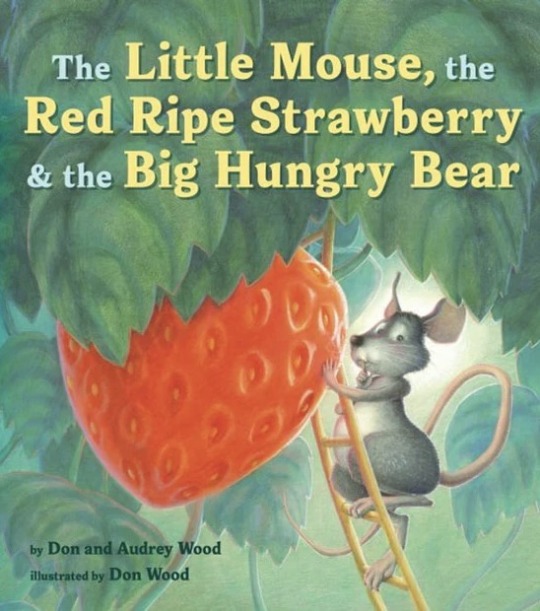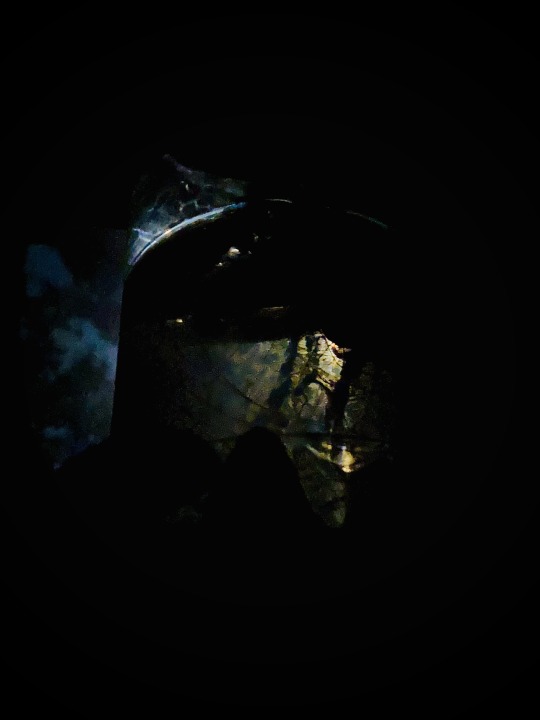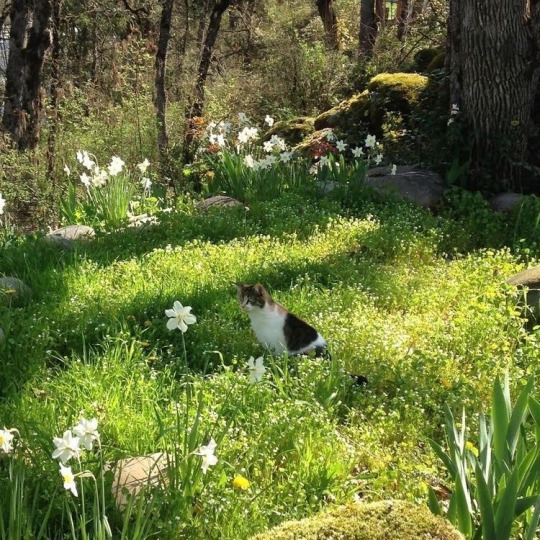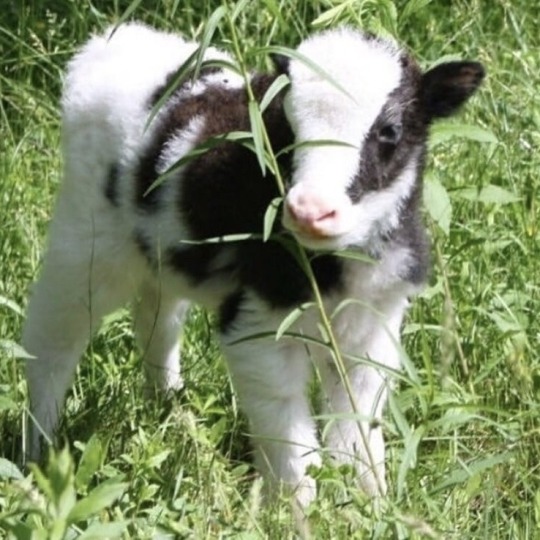#botany for kids
Explore tagged Tumblr posts
Text
Cultivating Curiosity: Fun Ways to Introduce Botany to Kids through Garden Stories
Garden stories give children a gateway into appreciating botany that will last them a lifetime. By weaving plant life’s intricate details into captivating tales, children can develop an intense curiosity and understanding of the natural environment around them. This method harnesses children’s natural curiosity for storytelling with practical, hands-on gardening experiences. As their stories…

View On WordPress
#botany education for children#botany for kids#children&039;s botany activities#children&039;s botany adventures#engaging children with botany#fun ways to teach botany#garden stories for children#introducing botany to kids#kids&039; garden books#plant exploration for kids
0 notes
Text

A sample of common crops of Uanlikri, with a focus on crops grown on the Ojame archipelago.
More information under the cut.
Grains
Several types of grains and grain-like crops are cultivated in Uanlikri. Of these, the four major types are millet, sand rice, swamp rice, and amaranth (not depicted).
Millet and sand rice are heat-loving and drought tolerant, with sand rice requiring especially good soil drainage but being more cold hardy. They are the main staples north of the Kantishian Mountains. Millet is favoured in the wetter Basin region, and sand rice in the dryer, more mountainous western regions, and both are grown equally in the continent's hot and arid northern desert.
Swamp rice is another important staple of the Basin region: though cultivation is complexified by its extremely heavy water requirements (swamp rice only grows in marshes or riverbanks), the complex river deltas leading to the Basin's inner seas are ideal for its cultivation and have been heavily modified to create artificial wetlands where swamp rice can be grown. Some strains of swamp rice have good cold hardiness allowing them to be grown south of the Kantishian Mountains. Swamp rice has also been selected for salt resistance: it is an especially important crop in the cold brackish marshes of the Cianji river and in the hot saltwater marshes of the Ojame Archipelago.
Amaranth is primarily cultivated in southern regions of Uanlikri. In the southern Basin region, they are a supplemental crop, but up in the mountains and in the cold lands south of the Kantishian, amaranth is the main staple. Mountain amaranth is especially frost resistant and able to survive nightly summer frosts in the Kantishian's high plateaus.
Red oats, known in the Ojame archipelago as uciwici, is a locally important crop grown in eastern coastal regions. Red oats is sensitive to extreme temperatures and does poorly in continental climates, but its extremely high salt resistance and ability to grow in poor soils make it a crucial crop by allowing cultivation to extend to otherwise marginal areas such as sandbars, coastal dunes, and other poor, rocky and sandy soils. It is appreciated for its purple grains with a naturally slightly salty taste, and for its decorative red foliage which retains some of its colour when dried, making it useful for basketry.

Ferns
Other grain-like crops grown in Uanlikri are seed ferns. Seed ferns are distantly related to true ferns and cycads. Two species are cultivated in Uanlikri: a climbing seed fern grown South of the Kantishian and which produces large numbers of small orange seeds attached to the underside of its fronds, and a caytoniale tree fern which produces modified fronds with large, round yellow seeds instead of leaves and is grown in the Upper Basin and Great Lakes region.
Climbing seed ferns are extremely prolific with a seasonal harvest on par with grain fields and well-keeping seeds with high nutritional value. The seeds are bitter with a taste somewhat reminiscent of burnt almonds and citrus peel, and are usually parboiled before cooking to remove some of the bitterness.
Caytoniale seed ferns are less prolific but are perennials. The seed envelope is also quite bitter, but the seed flesh has a pleasant neutral flavour and a crunchy, sticky texture not unlike that of meringue. Seeds keep well on the tree, but go bad quickly once harvested unless they are properly processed: seeds meant to be kept are parboiled, smoked, and ground into flour, while seeds meant for short-term consumption are either hulled and ground into flour, or hulled and grilled, often to be eaten as snacks alongside grilled insects.
True ferns are commonly consumed as greens, especially young fern shoots (fiddle-heads) and equisetum (horsetail) ferns. Antioles are less sensitive to the toxins in ferns, and parboiling of fiddleheads is often done but not strictly necessary unless consumed in great quantities.
Legumes
Legumes grown for food are historically rather rare in Uanlikri prior to the conquest of the Western Peninsula by the Senq Ha Empire. There are only two important legume crops in Uanlikri which are native to the continent: the grosbean, and the wax pea.
Grosbean is a vine which produces short, rectangular pods containing two to three large beans. The beans are exceptionally large, very colourful, and have a somewhat chalky texture. They used to be a staple in the Basin region, but have been mostly displaced by more palatable varieties introduced by Senq Ha colonists, though they are still grown for jewellery.
The wax pea is short, somewhat vine-like plant producing smooth pods containing a single unpalatable, extremely waxy pea. Though they are edible under duress, wax peas have never been grown as a food crop. They are instead highly valued for the wax which can be obtained by boiling the peas in a slightly acidic solution.
Other legumes (not depicted) have grown in popularity in the two centuries since and are now commonly eaten in most regions.
Roots and fruits
There is a great regional variation in the crops grown for their greens, roots, and fruits. This section should be treated as a sample of a sample, focused more closely on crops grown in the Ojame Archipelago.
Fruits
There are several species of ginkgo in Uanlikri, all of which produce elegant foliage and edible nuts. The nuts stink and their skin can cause rashes, so they are to be manipulated with caution, but their creamy flesh is much appreciated for its strong cheese-like flavour, which confers a pungent taste to salty and sweet dishes alike.
Bird cherries are small, cherry-like fruits that grow on trees and bushes. Most bird cherries are tart and astringent and are used for a touch of tartness or in jams and other preserves. Some cultivars produce very sweet cherries. The seeds of most birdcherries are mildly toxic to antioles.
The arils of a few yew species are eaten by antioles, especially as a gooey prepared delicacy or in jams. All other parts of the yew plant are extremely toxic to antioles, and the arils must be consumed with extreme caution. Because of this, it is illegal to plant yews on the Ojame Archipelago and especially in Ranai, but due to the extreme longevity of these trees, there are several ancient yews in the city of Ranai which are important landmarks and sources of yew arils.
Various citrus are grown and used throughout the Northern parts of the continent: most are acidic and bitter, though there are also sweet varieties. In the citruses of Uanlikri, green is associated with sweetness, yellow with bitterness, and orange with acidity.
Sumac is an important culinary crop in the Ojame Archipelago: sumac fruits are processed for the production of malic acid, a popular flavoring and crucial ingredient in the traditional Ojame ceviches.
Mothberries are named after their pale blue flowers in the shape of a butterfly. It is a drought resistant plant originating from the northern regions of the continent and cultivated for multiple uses: its tuber and leaves are aromatic and medicinal and its fruit is very sweet.
Roots
Root vegetables of all kinds make up an important portion of non-staple crops throughout Uanlikri.
Fur yams are floury and sweet, with edible and prolific leaves with a distinctly "green" taste.
Gourd roots, named after their shape, are crunchy, aromatic and sweet, with leaves used as culinary herbs.
Reeds are an all-around essential plants, with young shoots eaten as greens, roots eaten as a staple by coastal and marshland peoples, and its dried leaves and stems essential materials in basketry.
Orange onions are one of the many varieties of alliums cultivated in Uanlikri. They are the most popular alliums in Ranai. They are potently sulfuric and milden considerably with cooking.
Sweet and pearl radishes (are not radishes) are different cultivars of the Uanlikri radish (not a radish) with crunchy, fresh-tasting and slightly bitter leaves and small starchy tubers which produce very fine starches.
Spindleaf yams are plants with strangely shaped, aromatic and medicinal leaves somewhat reminiscient of sage and a juicy, crunchy tuber with a slight, mustard-like bite.
These are just a sample of grains, ferns, legumes, greens, roots and fruits eaten in Ranai and elsewhere on the continent of Uanlikri. Many of these plants have a large number of regional cultivars, and each region has a variety of local plants they grow or gather which are not broadly eaten elsewhere.
#worldbuilding#art by me#uanlikri#antiole world#speculative biology#speculative botany#also this took forever to do. not kidding#very fun though#unfortunately this does not really count for 'tober bc it's been done for a couple days. alas
104 notes
·
View notes
Note
I volunteer in a school library (for elementary, middle, and high school students) and we've got one shelf of plant books, and seven shelves of animal books. Can you (and your followers) recommend some kid-friendly books about plants? Maybe some organizations willing to donate some to a public school?
@sovereignsolace I don't work with kids much so I don't have a lot of suggestions personally. However, I was delighted to see this recently:

While there are certainly kids who will happily read the original book (which is excellent for so many reasons!), this will make it accessible to those who might find the original too long or who like the sorts of informational sidebars and other asides that make this version more adapted for primary/secondary classroom discussion.
I also found this list of botany-related books for kids on Goodreads.
Anyone else want to chime in with other suggested titles? Or know of a source for a library to get titles donated to them?
#botany#plants#books#childrens books#kids books#nature#ecology#environment#conservation#education#science#scicomm#library#librarian#sovereignsolace
77 notes
·
View notes
Text
He’s the head of the cutie patootie club, actually

#their personality consists of being pretty and that one time he died#just kidding he also likes botany and being annoying about movies#procreate#digital art#I’ve finally remembered how to draw people again instead of JUST ponies :D#my ocs#my art#digital illustration#original art#artists on tumblr#doodle#illustration#original character#art#original character art#drawing#digital drawing#oc
23 notes
·
View notes
Text

Ethel Franklin Betts (American,1880–1956) • Little Johnts's Christmas • Illustration to While the Heart Beats Young by James Whitcomb Riley • Bobbs Merril Co. • 1906
#illustration#art#illustrator#ethel franklin betts#botany book illustration#early 20th century illustration#golden age of illustration#american illustrator#kid lit#children's literature#children's illustration#children's books#sassafras & moonshine blog#illustration blog#art blog
21 notes
·
View notes
Text


I decided to try test out some persona designs for something I might be writing!
Left - Terpsichore (two version for a more modern/greek toga ish look)
Right - Persephone
(read the tags for more info!)
#my art!#persona#persona oc#persona fanart#persona au#terpsichore is supposed to be for one of my ocs whose true self is one who adores music and uses it as a way to break free#then persephone might be for haru or her kid maybeee#I was thinking the kid gains haru’s love of botany#and their true self represents that but also chains of being locked down to one place#like persephone and the pomegranate
5 notes
·
View notes
Text


... And I dream of the woman you'll be
#ss#rosie thoughts~#literally keep dreaming yaro your kid does not want to do botany like you#miqo'ra
5 notes
·
View notes
Text
A little fun fact about me is that back when I was a cringy ah 12yo I’d sometimes add really random tags that had absolutely no relation to the subject matter of my main post. Just for the shits and giggles.
And to annoy people and for attention ofc (can you tell I’m unemployed yet?)
Let’s see how many we can fit with this one (this is the only one I promise lol)
#whale watching#bdsmkink#the crown#classic literature#stray kids#astro photography#egyptology#sanrio#audhd#sovietwave#colonialism#merry x eowyn#alcohlism#rush e#sedimentary rock#gen z nostalgia#botany#disgusting#big pharma#shitpost#recipes#hells kitchen#barbenheimer#water cycle#economics#girl dinner#capri sun#football#anti work#doggo
5 notes
·
View notes
Text


little ceramic book end i made and the kid’s book i drew inspiration from ✨ it didn’t end up being very heavy though lol
The mouse had a tail but it fell off on the way home 😅
#mouse#mice#ceramics#art#kids book#strawberry#clay#sculpture#botany#flora#food#fruit#picture book#fan art#animal#animals#forest#bear#plant#plants#my art#my posts#bears
4 notes
·
View notes
Text
I was reading a fic by @zephyra-in-the-house and I think I found some songs that fit it.
Macaque: Kaden MacKay - Your Stupid Face Wukong: Abe Parker - Stupid Face
what do you think? (I recommend this fic, here's the link)
#lmk#monkie kid#lego monkie kid#monkie kid sun wukong#liu er mihou#monkie kid macaque#sun wukong#six eared macaque#lmk au#secret hashtag#I also have a headcanon that Wukong likes botany! (n_n) <3
10 notes
·
View notes
Text


midnight roots
#propogation#moonlight#moon#roots#tradescantia#botany#i had to stand on my tiptoes at the edge of my bathtub to take this picture it was very dangerous#dont try this at home kids
8 notes
·
View notes
Photo

Join me and Motolani Ogunsanya on her exciting talk show "The More Sibyl Podcast" on Saturday February 18th at 10 am CST / 4 pm GMT.
Katia Hougaard is a plant biologist currently working on a Ph.D. project on plant-insect interactions at Imperial College London. She was born in Austin, Texas, USA, and grew up moving between several different cultures. Learning organic vegetable gardening at an early age taught her to appreciate the challenges of sustainable food production as well as the importance plants have in human health and well-being. Her Ph.D. project explores the genetic basis of plants’ innate biological resistance to aphids, a pest of many economically important plant species. Katia also has experience teaching and mentoring undergraduate and Master's students in the practical and philosophical aspects of research, with a goal to help her students develop a growth mindset and scientific curiosity. She has presented her research for professional audiences and the general public on many occasions and has a science communication social media presence as Katia Plant Scientist. Katia enjoys the outdoors as well as making art, public speaking, and learning about other cultures.
#katia_plantscientist #womeninstem #womeninscience #podcast #interview #publicspeaking #womeninbotany #plantbiologist #botanist #scientist #talkshow #plants #science #sciencecommunication
#katia plant scientist#scientists#scientist#talk show#podcast#interview#Interviews#discussion#plants#gardening#botany#science communication#Public Speaking#women in science#plant biology#botanist#life story#third culture kid#academia#poc in academia#zoom#online learning#free event
7 notes
·
View notes
Text

I have the cutest research assistant.
6 notes
·
View notes
Text
Each deserves a double click. Super awwww time! And that gate leading to the meadow, exquisitely bucolic.




#original photography#aesthetics#nature#cute#art#botanical illustration#botany#farming#calves#so cute#goat kids#landd#landscapes#bucolic
10K notes
·
View notes
Text
Bruce's kids have definitely done homework on stakeouts and:
Robin: "I brought along this diagram of a leaf I'm supposed to make, and I was just wondering if you had any time to help me?"
Poison Ivy: "What are you talking about?"
Robin, pouting: "It's due tomorrow and I know I'm going to be here all night dealing with this. And I used to think botany was kind of boring, but it's kind of starting to grow on me--"
Ivy, reluctantly swayed: "Ugh, fine. So this first layer is the cuticle, followed by the epidermis--"
13K notes
·
View notes
Text
Like...I have my BL Botany posts (a subset of BL science that's just very lovely BL actors surrounded by flowers) but after the Step Out 2024 video I feel like I need to put together a SKZ Botany post.





HAN 🌹 5-STAR DOME TOUR VCR
4K notes
·
View notes